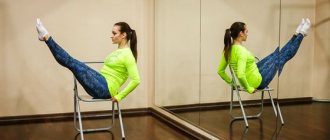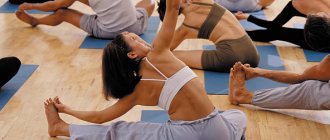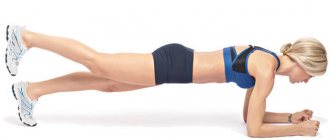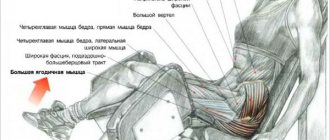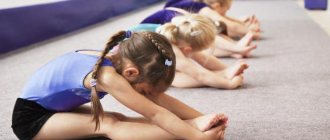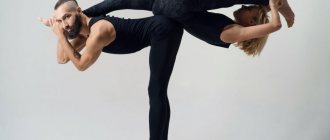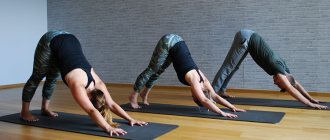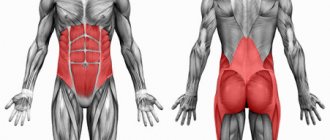Simple exercises will help relieve the fatigue accumulated during the day, relax your muscles and distract your attention from disturbing worries. It is believed that with the help of some yoga poses you can reduce anxiety, fight depression, insomnia, reduce and reduce the frequency of headaches, and improve blood and lymph circulation in the body.
We have collected seven yoga poses for you, the technique of which is quite simple - even a beginner can handle it. The main thing is to breathe correctly, concentrate on the task and relax your mind, and healthy, sound sleep will be a by-product.
Lying Butterfly Pose (Baddha Konasana)
This asana has an excellent calming effect, harmonizes the internal state, and helps to evenly distribute energy throughout the body. It also improves digestion and opens the pelvis.
A
Technique:
- Lying on your back, stretch your legs along the mat.
- Bending your knees, bring the soles of your feet together, smoothly bringing them closer to your pelvis.
- To prevent a sag in the lumbar region, point your tailbone toward your feet, stretching your lower back.
- Place your right hand just below the navel, place your left palm on the chest area, feel the connection between these two most significant energy centers.
- Keep your arms relaxed, your inner thighs relaxed, and your knees naturally drawn down by the force of the Earth's gravity.
- Stay in this position for as long as you feel comfortable and move on to the final asana.
Comfortable pose (Sukhasana)
This simple pose best sets you up for practice and prepares you for subsequent, more complex asanas.
This simple pose sets you up for practice in the best way.
Technique:
- Sit with your shins crossed, your right shin in front.
- Close your eyes, direct your attention to your body, focus on what is happening inside, on your sensations.
- Walk through your body with your mind's eye, become aware of your position, the position of all parts of the body.
- Stretch the top of your head up, do not tilt your chin, the facial muscles are relaxed.
- Feel your back, it should be flat so that the spinal column is perpendicular to the floor, push off the mat with your buttocks. Create a gentle stretch; there should be no excessive tension in the body.
- Your shoulders are straightened, your chest is open.
- Place your hands in a way that is comfortable for you, you can put your palms on your knees, while keeping your hands relaxed.
- Pay attention to your breathing, realize how the process of inhalation and exhalation occurs. Observe the changes in your body that occur during this process.
- Gradually strive to slow down the rhythm of your breathing, try to make your breathing calmer and deeper. Imagine that each inhalation begins from the very bottom of the abdomen, then expand the ribs and chest, completely filling the lungs with air, and when the air reaches the very collarbones, exhale slowly. Make sure that your shoulders do not rise as you inhale.
Breathing throughout the practice is performed through the nose. After several breathing cycles, proceed to twists.
Yoga before bed
Sometimes yoga is the only way to combat insomnia, and sometimes these exercises are prescribed in addition to medications. You can exercise on your own, without medical indications or consultation with a doctor. Sleep and dream yoga will help you smooth out the tension from a difficult day, calm down, and restore your breathing. She teaches you to control your thoughts and emotional state.
Exercises performed at night help:
- Relax your mind and body;
- Get ready for bed;
- Restoring strength.
Performing a set of asanas helps restore biorhythms and improve metabolism at the cellular level. An hour before class, it is not recommended to have dinner, engage in physical or mental labor, or watch emotional films. Before doing the exercises, you need to ventilate the room; you can turn on relaxing meditative music for the background.
The main rule: dream yoga should relax the body and not cause injuries and sprains.
Each asana is done based on the individual capabilities and preparedness of the body. The difficulty increases gradually, as does the perfection of execution.
Halasana
Plow pose in bed is just as effective.
It is especially convenient to perform halasana in bed if the bed has a flat or relatively flat back. The legs can be fixed anywhere - on the headboard, on the wall - or simply held suspended. The peculiarity of performing the plow pose on a bed is that the softness of the support will allow any beginner to easily lift the pelvis up to perform the inverted asana. You just need to help lift the pelvis with your hands - and now the inverted asana works!
Super effective spinal twist
Curl to your health!
The illustration may seem that this is not a physical exercise, but relaxation in a comfortable position. But that's not true. Very effective twisting occurs in the thoracic and lumbar regions. This morning twist is especially indicated for those who suffer from back or lower back pain after sleep. An important point: it is advisable to lie in a twist in each direction for at least a minute. Better – 2-3 minutes.
Half bridge
The half bridge is very simple to perform, but extremely effective.
The next stage is to warm up the muscles of the lower back and pelvic area. An ordinary half-bridge will not only help warm up the body, but also, being one of the simplest “inverted” asanas, will ensure a rush of blood to the brain - and this is a very important goal for the body in the morning. It has been proven that performing inverted yoga asanas in the morning helps improve attention and performance throughout at least the first half of the day.
Nidra Yoga
The second name for the practice is psychological sleep or yogi sleep. It allows you to completely relax by focusing on your inner world. It differs from the classical one in that it does not require asanas. This is part of pratyahara, based on distraction from the outside world, a still state, control over thoughts and emotions, visualization. Such simple mental exercises allow you to relax, learn to let go of worries and fears. Every day for healthy sleep it is enough to devote only 30-40 minutes to practice.
Yoga Nidra is a good way to enter deep relaxation in a short period of time. Frequent practices help restore degenerated brain nuclei and centers. Another benefit of nidra is the replenishment of sleep. This is due to the fact that during exercise the body relaxes and rests in the same way as during real sleep. One hour of practice is equal to 2-4 hours of rest. Duration depends on experience and ability to enter a meditative state.
Sleep and dream yoga - nidra, is especially recommended for people suffering from physical and mental exhaustion. And also for those who lead a passive lifestyle, are prone to depression, frequent mood swings, and irritability.
State of Nidra Yoga
A person, plunging into the state of nidra, is on the verge between sleep and normal physical activity. He can control not only what is happening around him, but also his psyche, the subconscious. Evoke the necessary memories, find solutions to problems during sleep, the primary sources of fears or bad mood.
Regularly entering the state of nidra allows you to reduce the emotional and mental stress that arises as a result of the impressions and events accumulated during the day. Very often they are the cause of insomnia: the brain is unable to relax due to many thoughts. A similar relaxation process occurs during sleep and dreams.
Nidra is sometimes compared to hypnosis. But there is very little in common between them. Yoga Nidra is the ability of a person in heightened self-awareness to observe his own emotional and psychological transformation. And in a state of hypnosis, a person becomes sensitive to the advice and tips of the hypnotist, and is deprived of the ability to control his state.
Yoga Nidra technique for insomnia
The most suitable position for performing yoga is savasana. If desired, you can place a small pillow under your head. The room should be warm and the air fresh. The eyes are closed and the body is motionless throughout the practice.
Yoga for insomnia begins with relaxation: the muscles of the face, neck, arms and body, right down to the fingertips. You also need to feel how all the internal organs, ligaments, bones, systems, and mind relax. To maintain brain activity, attention is focused on breathing and the images that arise in the mind.
During classes with a trainer, some practitioners fall asleep and hear only the first and last words of the trainer. It is important to know that everything that happens during sessions is individual and correct, and each person perceives the state of nidra in his own way.
In the process of practicing nidra, a sankalpa is formed - an intention, an internal conviction, which is brought to the subconscious. The intention is repeated many times, and as a result takes on real shape. This can be either an intention to free yourself from a bad habit, or a desire to improve some personal qualities, overcome fear, etc.
Start of practice
The pose of a corpse suggests a certain mood, a state of calm. After the body has completely relaxed, you need to take a deep breath. Next, the practitioner becomes aware of his body from the top of his head to his toes. The purpose of this exercise is to check for tension and tight energy nodes.
Then you need to feel every part of the body in contact with the bed:
- Back of the head;
- Shoulders;
- Shoulder blades;
- back;
- Buttocks;
- Hips;
- Legs.
Feel how the body becomes heavy (every part and organ). There should be a feeling that the body is being pressed, merging with the bed or floor under its weight. When this state is achieved, feel lightness - soar above yourself, your body, the surface.
In a state of weightlessness, it is usually time for sankalpa: the intention is repeated three times, maximum confidence and strength is invested in each word. Next, again become aware of each part of the body and focus attention on it. Usually the sequence is like this:
- Fingers of the right hand, starting with the thumb;
- Palm;
- Wrist;
- Shoulder;
- Armpit;
- Right side of the chest;
- Right thigh.
In the same sequence, left side:
- Right big toe and foot;
- Sole;
- Heel;
- Ankle;
- Knee-joint;
- Hip;
- Right buttock.
In the same sequence, left side:
- Small of the back;
- Back;
- Both shoulder blades;
- Back of the neck;
- Head;
- Face starting from the chin;
- Lower and upper lip;
- Cheeks;
- Ears;
- Nostrils;
- Eyes;
- Eyelids and eyebrows;
- Forehead.
After which the whole body is realized as a single whole. Next you need to feel the cold. You can imagine yourself walking through deep snow. First, the legs freeze, the cold rises up the ankles, grips the hips, abdomen and back, rises higher, penetrating every cell of the body and mind. As soon as the feeling reaches the top of the head, the cold is replaced by warmth. The sun's warmth fills a person, enters the lungs with inhalation, and penetrates the skin. Warmth is replaced by pain. This can be both physical and emotional pain. It is important to express and feel this feeling as much as possible. Finish the first part of the practice with a feeling of pleasure. Strong deep pleasure.
The benefits of yoga nidra from a scientific point of view



